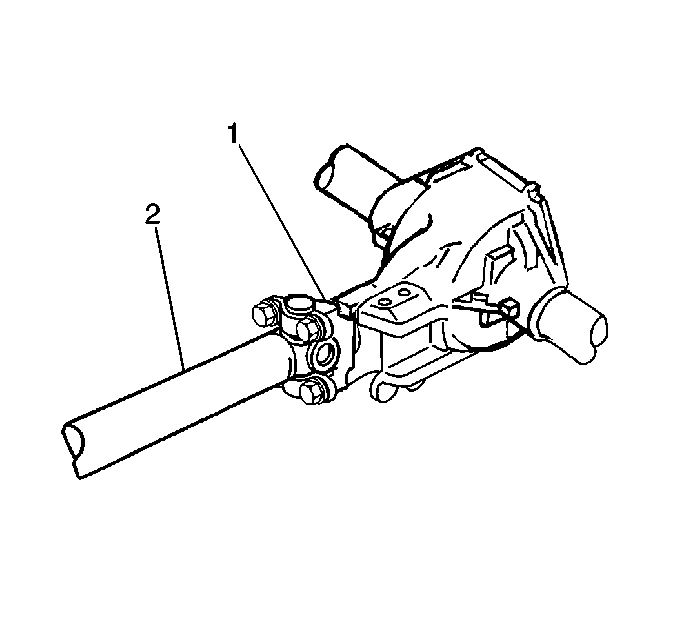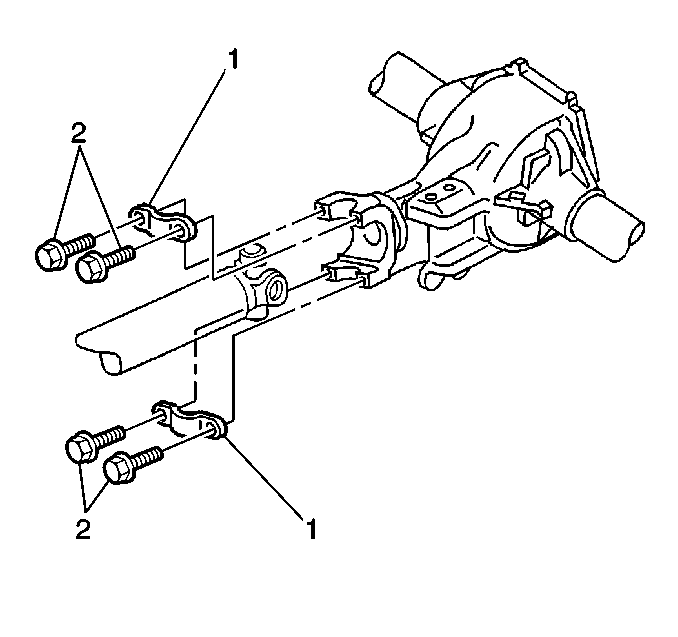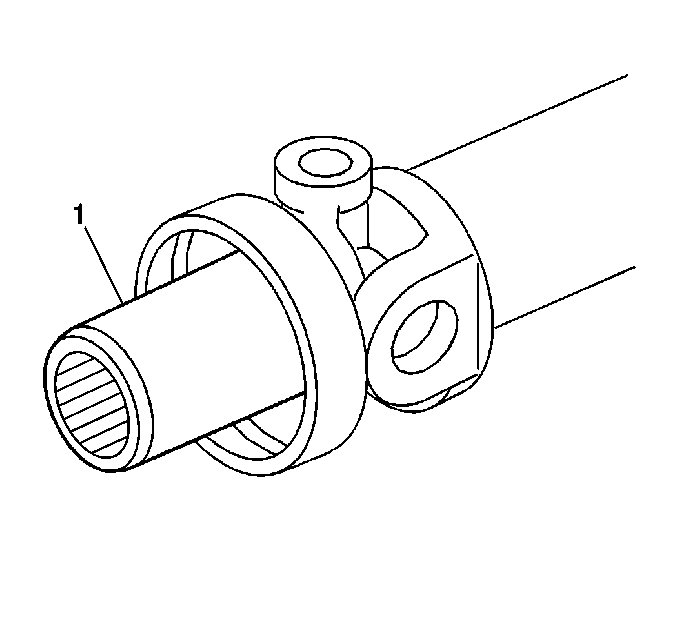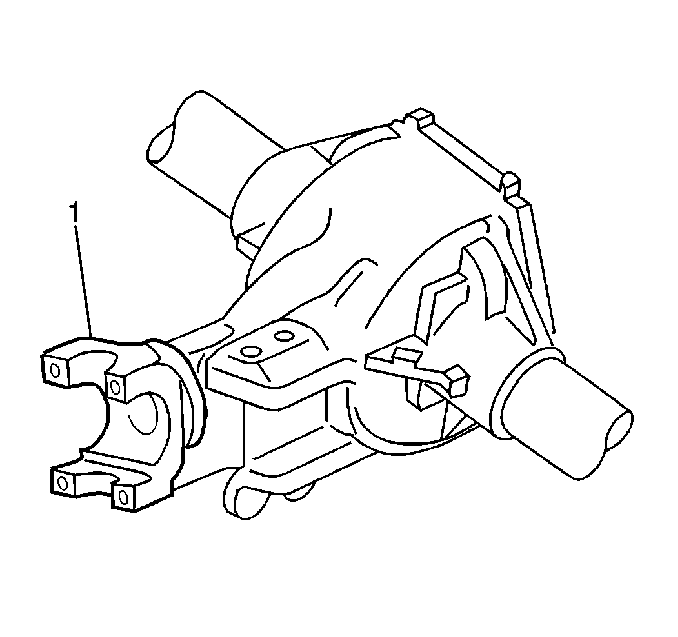Removal Procedure
Notice: Do not strike or drop the propeller shaft, or allow the universal joints to bend to extreme angles, as internal joint damage might occur.
- Raise and suitably support the vehicle. Refer to Lifting and Jacking the Vehicle in General Information.
- Mark the relationship of the propeller shaft (2) to the pinion gear yoke (1).
- Remove the propeller shaft bolts/screws (2).
- Remove the propeller shaft retainers (1).
- Use the following steps in order to remove the propeller shaft:
- Inspect the transmission output shaft splines for burrs.
- Inspect the outer diameter of the slip yoke (1) for burrs.
- Inspect the outer splines of the slip yoke (1) for the following conditions:
- Inspect the relationship of the outer splines of the slip yoke (1) to the transmission output shaft splines. The outer splines of the slip yoke should meet the following requirements:
- Inspect the pinion gear yoke (1) at the universal joint cap connecting surface for the following conditions:


Important: Support the propeller shaft during removal.

| 5.1. | Withdraw the slip yoke (3) from the transmission. |
| 5.2. | Move the propeller shaft (1) rearward and pass the propeller shaft under the housing (2). |
If the bearing caps are loose, tape the bearing caps together in order to prevent dropping and losing the needle roller bearings.

| • | Damage |
| • | Twisting |
| • | Wear |
| • | The outer splines should agree in number with the transmission output shaft splines. |
| • | The outer splines should fit with the transmission output shaft splines. |

| • | Burrs |
| • | Foreign material |
Installation Procedure
Notice: The propeller shaft must be supported carefully during handling to avoid jamming or bending of parts.
- Lubricate the slip yoke with chassis lubricant.
- Install the slip yoke onto the transmission output shaft.
- Install the rear of the propeller shaft (2) to the pinion gear yoke (1).
- Install the rear universal joint to the pinion gear yoke.
- Install the propeller shaft retainers (1).
- Install the propeller shaft bolts/screws (2).
- Lower the vehicle.
Important: Do not place any tool between the propeller shaft slip yoke and the splines. Placing any tool between the propeller shaft slip yoke and the splines may cause damage to the transmission oil seal.
Important: Be sure to align the mark on the pinion gear yoke with the mark on the propeller shaft.

Ensure that the bearing caps are properly seated.

Notice: Use the correct fastener in the correct location. Replacement fasteners must be the correct part number for that application. Fasteners requiring replacement or fasteners requiring the use of thread locking compound or sealant are identified in the service procedure. Do not use paints, lubricants, or corrosion inhibitors on fasteners or fastener joint surfaces unless specified. These coatings affect fastener torque and joint clamping force and may damage the fastener. Use the correct tightening sequence and specifications when installing fasteners in order to avoid damage to parts and systems.
Tighten
Tighten the propeller shaft bolts/screws evenly to 22 N·m
(16 lb ft).
